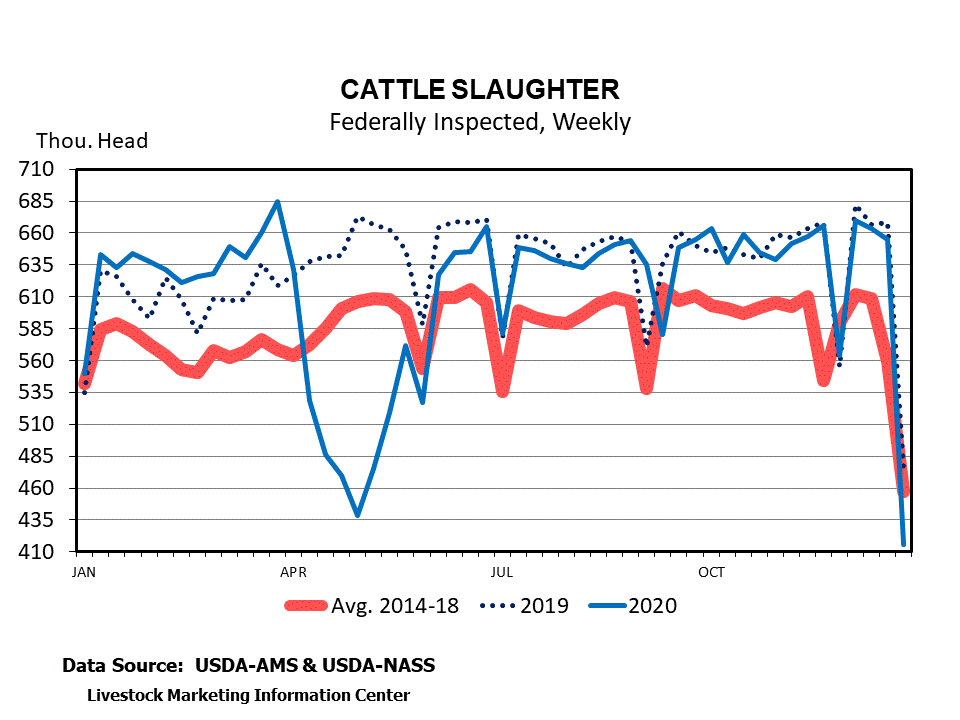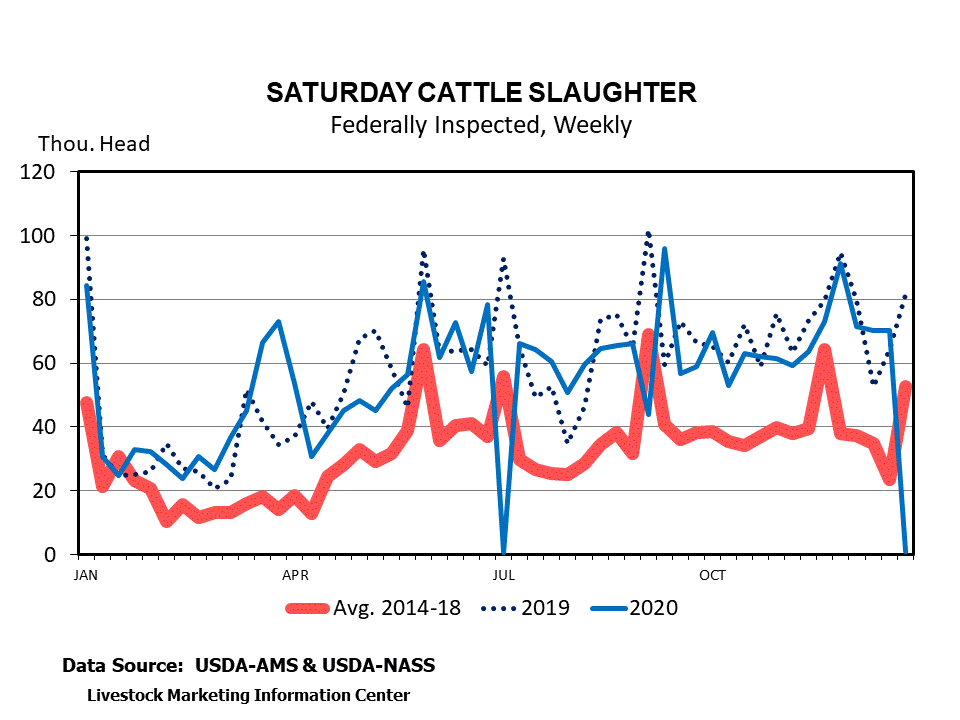Livestock Market Comments
COVID-19 Ripples to Cattle on Feed Report
January 19, 2021
David P. Anderson
Professor and Extension Economist
Livestock and Food Products Marketing
The first Cattle on Feed report of the new year will be released on January 22nd. There are a couple of things to watch in this report including the pace of marketings, placements, and the breakout of steers and heifers on feed. For my pre-report estimates, I have (as a percent of a year ago):
- Marketings 3
- Placements 0
- COF 4
Marketings
There was one more slaughter day in December, 2020 compared to 2019 (22 vs. 21). With one more day, marketings and slaughter at 100.3 percent of a year ago might be regarded as a relatively disappointing number. A large portion of the difference to a year ago is in the holiday shortened Christmas week (Christmas Day was a Friday). Weekly steer and heifer slaughter was down about 49,000 head compared to the year before in that holiday week.
Placements
Placements appear to be below a year ago. Feeder cattle imported from Mexico were about 17,000 head below a year ago in December. About 4,000 more feeders were imported from Canada in the month. The receipt data is often not a reliable indicator of placements, but for what that’s worth receipts were up about 25,000 head above December, 2019. Feed prices were escalating during December likely discouraging some placements, or at least forcing prices to a more palatable level for buyers. Even higher feed prices occurred in early January.
COF
The combination of large marketings and very low placements should drastically reduce the number of cattle on feed. I have April 1 COF at 95.0 percent of a year ago. Sharp declines in cattle slaughter and beef production have occurred as packing plants have either shut down or slowed processing. This report will be evidence of further ripples through cattle and beef system. So far through April feeder cattle receipts continue well below a year ago and, anecdotally, cattle runs at local auctions are reported to be 50 percent of a year ago. Fewer cattle on feed will translate to ripples through future cattle slaughter, dressed weights, and beef production going through the year.







